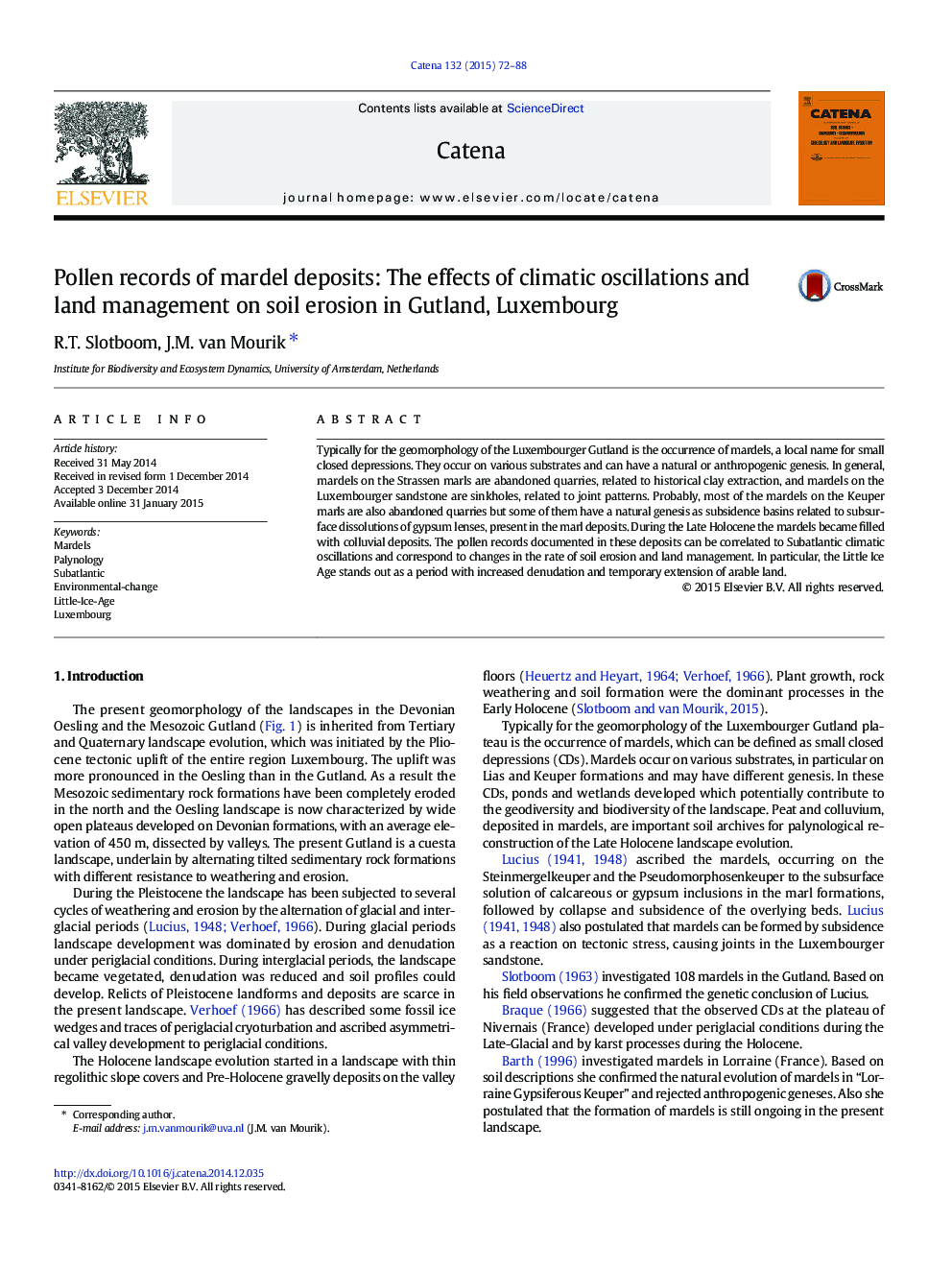| Article ID | Journal | Published Year | Pages | File Type |
|---|---|---|---|---|
| 4571163 | CATENA | 2015 | 17 Pages |
•Mardels are closed depressions, occurring in Luxembourg, Germany and France.•There can have a natural or anthropogenic genesis.•Mardel deposits are valuable soil archives for paleoecological studies.•The Little Ice Age is the clearly recorded in mardel deposits.•The impact of climatic change on land use on soil erosion is clearly registered.
Typically for the geomorphology of the Luxembourger Gutland is the occurrence of mardels, a local name for small closed depressions. They occur on various substrates and can have a natural or anthropogenic genesis. In general, mardels on the Strassen marls are abandoned quarries, related to historical clay extraction, and mardels on the Luxembourger sandstone are sinkholes, related to joint patterns. Probably, most of the mardels on the Keuper marls are also abandoned quarries but some of them have a natural genesis as subsidence basins related to subsurface dissolutions of gypsum lenses, present in the marl deposits. During the Late Holocene the mardels became filled with colluvial deposits. The pollen records documented in these deposits can be correlated to Subatlantic climatic oscillations and correspond to changes in the rate of soil erosion and land management. In particular, the Little Ice Age stands out as a period with increased denudation and temporary extension of arable land.
